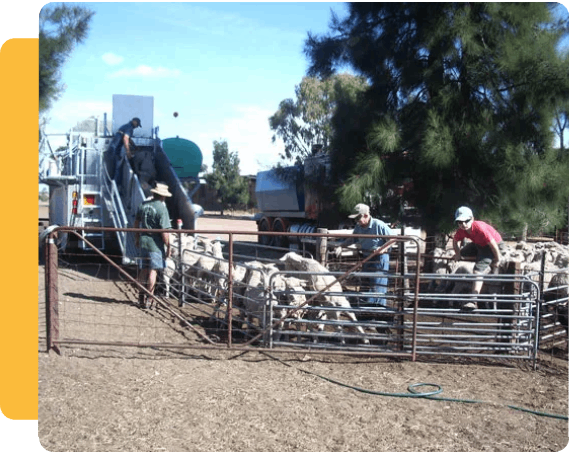Dipping Tips – Sheep Health and Hygiene
Historically, dipping sheep has been associated with some health and hygiene risks.
Dipping Dynamics dips incorporate many features which significantly reduce the health and hygiene risks that can be associated with dipping sheep. Dipping Dynamics staff and contractors are fully trained to provide specialist advice to the farmer to further help mitigate these risks.
Sheep in good health and physical condition are obviously less likely to be adversely affected by dipping. However, it is important to understand that there are some risks associated with dipping sheep and it is critical that steps are taken to minimise these risks.
Mobile Sheep Dipping – Easy & Effective Lice Eradication
Improve Animal Health and Safety When Dipping by:
- Avoid driving sheep long distances (>3km) on the day prior to dipping. If sheep have to walk further than this consider moving them closer to the yards over a couple of days prior to dipping in a couple of shifts.
- Avoid the use of aggressive dogs when mustering and droving sheep closer to the yards.
- Check no sharp projections exist in the yards and dip
- Control biting dogs and ensure all biting dogs are muzzled
- Dip lambs and ewes separately to avoid trampling
- Dipping Dynamics dips are designed for free flow, with easy entry and exit. Injuries are rare where planning, stockmanship and facilities are adequate.
- Dip sheep as soon as possible after shearing cuts have healed, preferably 2-4 weeks after shearing and ideally no more than 6 weeks.
- Dipping before shearing cuts have healed increases the risk of post-dipping lameness, clostridial infections, spread of mycotic dermatitis and cheesy gland.
- Post-dipping lameness is caused by the bacterium Erysipelothrix rhusiopathiae. This bacterium will contaminate dips that are not kept clean. Infection occurs through skin cuts and causes a severe lameness several days after dipping.
- Dipping Dynamics aims to minimise the risk of post-dipping lameness by using stainless steel sumps and ensuring that the dipwash is emptied daily and the dip is pressure washed.
- Preferably dip early in the morning to allow sheep to dry quickly. Leave enough time in the afternoon for sheep to dry before nightfall.
- Avoid dipping in cold, wet or windy conditions, or if these conditions are forecast.
- As a blanket rule, Dipping Dynamics will not proceed to dip sheep if windy weather below 12°C is predicted.
- Avoid dipping sheep with long wool. This takes considerably longer to dry and offers no more insulation when wet.
- If sheep are grazing under conditions where Barbers Pole Worm (Haemonchus contortus) infestation is possible, ensure sheep have been drenched with an effective drench in the weeks prior to dipping. If not, the stress of handling and dipping can lead to sudden outbreaks of disease.
- Clostridial: Malignant oedema (blood poisoning) and tetanus can be associated with dipping as the clostridial bacteria can enter any open wound.
- Cheesy gland: The bacteria causing cheesy gland (Corynebacterium pseudotuberculosis) is spread through discharges from ruptured abscesses in lymph nodes. The bacteria can survive in sheep dips for > 24 hours and spread can be through intact skin as well as cuts.
- The risk of clostridial diseases occurring or the spread of cheesy gland can be prevented by ensuring that sheep are vaccinated prior to dipping.
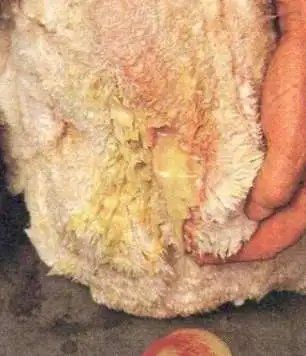
Cheesy gland abscess
- Minimise mixing of mobs and the time held in close contact.
- Avoid dusty yards.
- Avoid hard droving.
- Avoid dipping heavily pregnant ewes (within 4 weeks of lambing).
- Keep pregnant ewes off feed for the least possible time.
- Do not deny pregnant ewes access to water.
- Do not dip hot or thirsty sheep; they may try to drink the dip wash.
- Always dip lambs first in the cleanest wash, as they are the most susceptible to infection.
- Dip chronically infected lumpy wool or cheesy gland sheep last.
- Do not hold sheep too long in draining pens.
- Do not dip more than one sheep for each 2L of dips original volume before dipping out and recharging the dip.
- Make use of disinfectants (e.g. Hibitane) and bacteriostats. Disinfectants slow bacterial growth in the dipwash. Hibitane can be added at the rate of 2L/1000L dipwash and is recommended when dipping young sheep, grass seed infested sheep or on rare occasions when holding dipwash overnight.
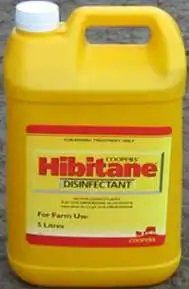
Hibitane can be used to slow bacterial growth in the dipwash
- Do not hold wet sheep too long in the draining pen.
- Do not hold sheep in a confined yard post dipping.
- Allow sheep to move slowly back to their paddock on their own, to avoid close contact before sheep are dry.
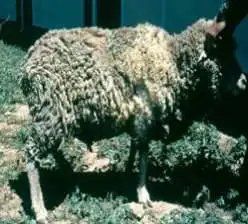
Sheep with lumpy wool
Successful Lice Control Tips
For lice eradication to be achieved on an individual property the following principles for effective lice control need to be adhered to:
- Avoid split-shearing unless the different mobs can be completely separated. This includes rams, lambs, killers, etc.
- Ensure complete musters. After a mob has been mustered and moved into the yards, do a recheck of the paddock to ensure no stragglers have been left.
- Pay attention to neck region to ensure tufts of wool are not left.
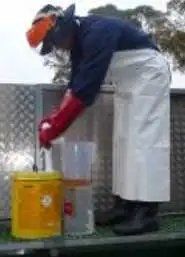
Extensive training for operators
Dipping Dynamics provides extensive training to its employees and contractors to ensure they fully understand the product label and are accredited operators of the types of machines they are using.
- Ideally sheep will be treated between 2-6 weeks post shearing.
- Dipping Dynamics staff will ensure that equipment is in good working order and that product is used in accordance with the manufacturer’s recommendations.
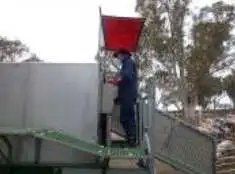
Dipping Dynamics staff will ensure that equipment is in good working order
- Ewes lambing “off-the-board”: It is important to consider the time between treating the ewes and the start of lambing. Heavily pregnant ewes (within 4 weeks of lambing) should not be dipped.
- Ewes with lambs at foot: it is important that lambs are also treated for lice to prevent re-infestation of the ewes.
- Do not mix treated sheep with untreated sheep.
- This includes both boundary and internal fencing.
- Stock proof fences are essential to prevent reinfestation from outside sources.
- Prevent re-infestation of lice by quarantining introduced sheep until it is certain they are lice free.

